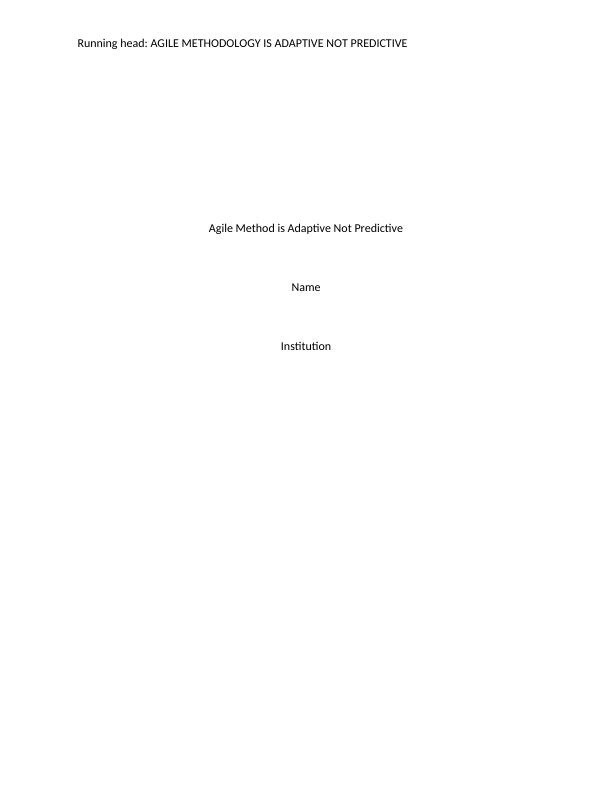Agile Methodology is Adaptive Not Predictive
10 Pages3293 Words445 Views
Added on 2023-04-23
About This Document
This article discusses why Agile methodology is adaptive and not predictive. It explains the Software Development Life Cycle (SDLC) and the two distinct approaches, Adaptive and Predictive methodologies. It also compares Agile adaptive with predictive Waterfall Model and highlights the merits of the adaptive approach over the predictive approach. The article concludes by discussing the benefits of the adaptive approach, including early delivery, transparency, user focus, and high-quality software.
Agile Methodology is Adaptive Not Predictive
Added on 2023-04-23
ShareRelated Documents
End of preview
Want to access all the pages? Upload your documents or become a member.
ICT Project Management: Methodologies, SDLC, Waterfall, PLC
|6
|1018
|140
Information System Design
|4
|742
|463
System Analysis and Design
|13
|1658
|447
Software Development Lifecycles PDF
|107
|33743
|261
Software Engineering: Development Methods, Quality, Diagrams, and Lucid Chart
|15
|4370
|101
Agile and Iterative Software Methodologies for Developing a Customer Relationship Management Application
|13
|2966
|70



